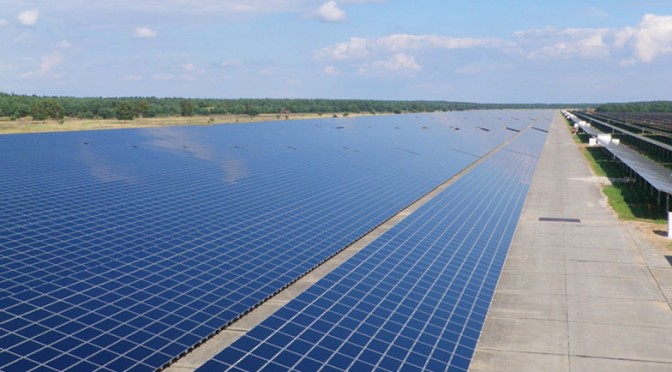In 1931, the year he died, Thomas Edison told his friends Henry Ford and Harvey Firestone: “I’d put my money on the sun and solar energy. What a source of power! I hope we don’t have to wait until oil and coal run out before we tackle that.”
It’s time we took Edison’s words to heart. Consider the numbers: Fossil fuels continue to dominate global energy consumption and account for a staggering 87 percent of the energy market, while renewable energy accounts for a mere 2 percent.
Pakistan reflects these global trends. Oil and gas remain the two key components of the energy mix in 2012, accounting for 65 percent (oil 15 percent and gas 50 percent). Approximately one third of Pakistan’s energy requirements are being met through imports, with the bill reaching nearly $15 billion in the year ending June 2013.
Pakistan’s energy sector is plagued with myriad issues, ranging from circular debt to a crippling dependence on expensive oil. Coupled with a lack of exploitation of economical alternatives in the renewable energy sector, this has culminated in an energy shortfall that has reached 7000 MW. Yet the Water and Power Development Authority forecasts that the country’s electricity demand will increase to around 40,000 MW by 2020.
To meet the shortfall and the anticipated increase in demand we should, as Edison said, put our money and efforts in exploiting the sun, along with other renewable resources, rather than continue to rely on finite resources such as oil and gas.
With its plentiful sunshine, Pakistan has immense potential for solar power, with solar energy available at a rate of 1000 watts per square meter. Remote and rural areas in Pakistan, particularly the provinces of Sindh and Balochistan, stand to gain from developing solar power. In Balochistan, 77 percent of the population lives in rural areas and still 90 percent of villages are yet to be electrified. Given that these villages are remote from each other, laying down transmission lines is a costly solution. However, Balochistan is particularly suited for the exploitation of solar energy, given its average daily global insolation of 19-20 MJ/m2 per day with annual mean sunshine duration of 8 to 8.5 hours a day and these values are amongst the highest in the world. “Insolation” here means exposure to sunlight and is a measure of solar radiation energy received on a given surface area.
Harnessing solar energy in such remote areas would provide local people with access to electricity for their houses and businesses. This in turn would improve living standards and contribute to poverty alleviation.
Ongoing efforts reveal the potential gains. Take “Lighting a Million Lives,” which has provided solar electricity for six villages in Sahiwal, Punjab and aims to reach 4,000 villages in the next four years. Or consider the solar tube-well installed in Ahmadwala, a village near Lahore, by the Rural Community Development Society (RCDS), which operates around 12 hours a day and irrigates about 40 acres.
Solar power does entail a significant initial investment, and this has tended to discourage its acceptance as an alternative to fossil fuel. But after a few years, when the initial outlay is recouped, the only cost is maintenance. The resource itself, sunlight, is free. Moreover, with technological improvements, economies of mass production and an exemption of all taxes and duties on the import of photovoltaic (PV) modules and related components, there has been a decline in the cost of importing photovoltaic cells, such that generating PV solar power now costs only about 14.40 rupees ($0.14) per kilowatt-hour, actually cheaper than diesel-fired generators, which can cost as much as 32 rupees per kilowatt-hour, making it a viable option. While gas-fired generators may be cheaper than diesel, natural gas is not a renewable resource and Pakistan is rapidly depleting its natural gas reserves without investing in other indigenous resources that would help reduce its import bill.
Pakistan’s natural gas resources are not infinite. As Edison suggested, we must turn to the development of alternative energy sources, such as solar power, as a cheap, inexhaustible, indigenous and pollution-free alternative that meets the energy needs of a developing economy.
Mubarik Khan is a lawyer at one of Pakistan’s leading law firms.


